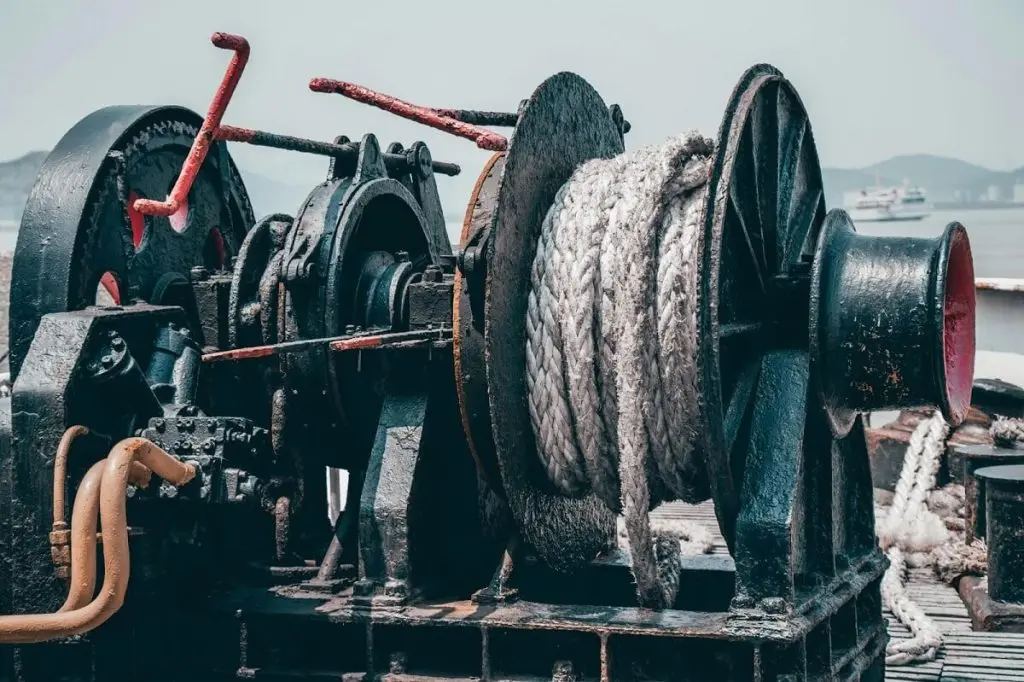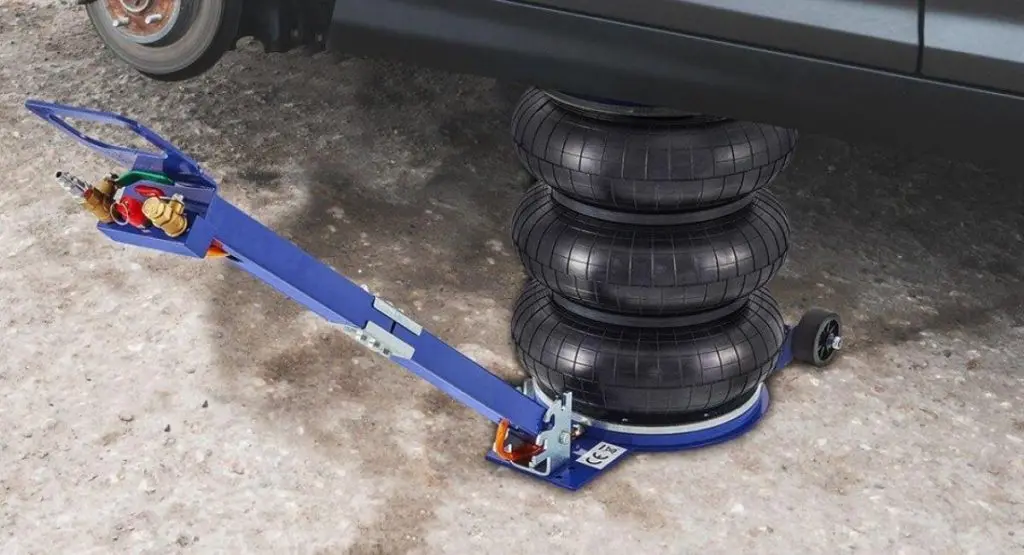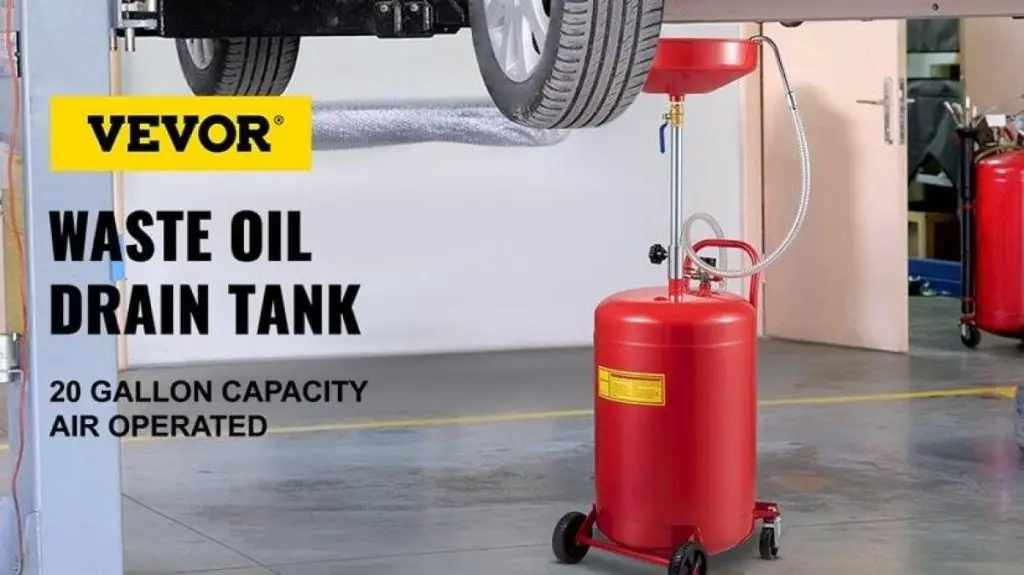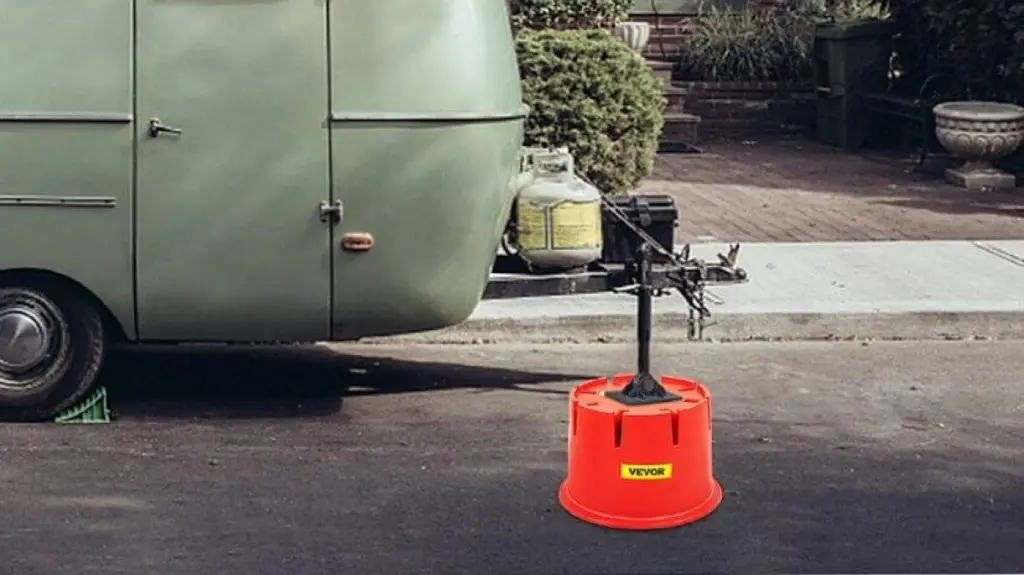As we all know, having a winch can mean all the difference between spending the night in your car in the middle of nowhere and enjoying off-roading adventures followed by a cozy bed. You may be asking yourself, though: What size winch do I need?
After deciding to install a winch on your vehicle, the next step is to determine if it will be a strong enough winch to pull your car back ever again. Do you really want to spend your money on a winch that may end up leaving you stuck in a bogs hole? Watercraft are heavier than the bulk of off-road vehicles, so the same power winch that you might use on non-ATV could actually be a lot weaker than you need to have available. That brings us to this guide: what size of winch do I need for my needs?
Table of contents
Why Winch Size Matters?
There’s no one-size-fits-all solution when you’re looking at winches. You need to get a winch size that is perfect for your application.
Safety First
Using a winch that’s too small is dangerous and can cause equipment damage or personal injury. A small winch may fail under load and cause accidents. You should always match the winch capacity to the task at hand to determine the size of the winch.
Efficiency and Peace of Mind
A properly sized winch makes recovery easier and more efficient. It saves time and effort during recovery operations. With the right winch, you can handle tough situations smoothly. This ensures that your equipment works effectively and keeps you calm in challenging conditions. It is advised to choose the right winch for safety.
Understanding Winch Capacity and Your Vehicle’s Weight
Since winch capacity fluctuates when the winch unwinds, it might be confusing. The winch operates at its maximum capacity when the line is mostly unspoiled and there is only one layer of cable remaining on the drum.
The capacity decreases as the cable winds around the drum until it is completely coiled. This is known as “fully wound load capacity”.
Gross Vehicle Weight Rating (GVWR)
GVWR corresponds to your 4×4’s maximum operational weight, which includes the driver and passengers as well as fuel, camping equipment, tools, and any custom upgrades. It’s not something you work out. The manufacturer designates the GVWR. It’s not as simple to find online as you may believe. Rather, head outside to your rig and locate it! Every car has the GVWR printed on the outside.
Usually, there’s a tag on the door jamb of the driver’s side. Occasionally, it can be found in your owner’s manual or on a sticker under the engine.
The 1.5x Rule
As a general rule, you should double the gross weight of the heaviest thing you intend to haul by 1.5 to determine the minimum size of winch you’ll need. So, if you’re wondering what size winch for car trailer is needed, you need to double the weight of your trailer and divide it by 1.5.
Real-World Factors to Consider
When choosing the right winch size, it’s important to consider terrain, load, and other variables. Mud, sand, and steep hills increase resistance, so they require a stronger winch. On the other hand, smooth surfaces need less power. The weight of the load is another crucial factor as heavier vehicles or objects demand a higher capacity winch.
Additionally, weather conditions, rope length, and winching angles all affect performance. Wet or icy conditions add resistance, longer ropes can reduce pulling power, and winching at an angle may require more force. So, if you’re wondering what size winch for car trailer is the best, you must consider all these factors first.
Winch Types and Their Ideal Applications
There are various types of winches and all of them serve different purposes. Let’s learn the different types of winches and their ideal applications.
Electric Winches
Electric winches are powered by electricity and they can run on either an AC or DC power source. ATV batteries are typically used to power DC-powered ATV winches. The majority of truck and trailer winches function on a basic 12-volt DC power source, which can be configured to run off the truck’s electrical system when the alternator starts and the truck is turned on.
When a winch is powered by a truck’s electrical system, it uses less energy than when it runs on a dry battery. Surprisingly, VEVOR winches consume very little electricity because the gear system does the majority of the work.
A VEVOR electric winch is a popular option among off-roading enthusiasts. It is easy to use and very adaptable to different applications. VEVOR offers reliable solutions for lighter vehicles, ATVs, and general-use applications.
Hydraulic Winches

Hydraulic winches are ideal for the most difficult operations both on land and in the sea. Typically, this heavy-duty winch is utilized for a variety of purposes on docks, ships, and coastlines. Since the hydraulic system powers the winch, it provides a strong force to handle a lot of labor.
Even though hydraulic winches have a complex installation system, they offer high power and continuous use benefits. You can use it for heavy-duty applications and vehicles with existing hydraulic systems.
Other Winch Types
Apart from electric winches and hydraulic winches, there are other winch types, such as manual winches and PTO winches. A manual winch uses a rotary handle to be manually turned in order to raise, carry, or tow an object. You can move big objects that are hard to move by hand by turning the handle to wind and unwind the wire rope.
The power source, denoted by the letter PTO, is drawn from the transfer case and is used to power a short drive shaft that travels to the front of the car and engages the winch’s gearbox. The engine must be running to operate this type of winch.
Calculating Your Ideal Winch Size – A Step-by-Step Guide
Okay, so if you’re wondering how big of winch do i need or what size of winch do I need, we have the perfect solution to calculate your ideal winch size.
Step 1: Find Your Vehicle’s GVWR
The most crucial thing to keep in mind is what the winch will be used for and the kinds of circumstances in which it will be necessary. To begin, find the “Gross Vehicle Weight” of the car, which is attached to a metal tag on the edge of the driver’s door. Add the weight of any extras or modified parts, and you have the “working GVW rating”—the benchmark for determining the appropriate amount of winch.
To get the required winch amount for your car, multiply the operating GVW by at least 30%. Let’s take an example where your operating GVW is 6,700 pounds. This implies that you want to search for a winch that has a working load capacity of at least 8,000 pounds.
Step 2: Apply the 1.5x Multiplier
Now, if you want to know what size winch do I need for my jeep, you need to determine the maximum legal weight limit for the jeep. For instance, it is 3350 kg. This is the maximum weight your automobile can carry overall, including passengers and accessories.
The industry standard is to multiply the entire weight of the vehicle by 1.5 to determine the desired winch for secure and efficient recovery. So, 3,350 x 1.5 = 5,025. That is your guide to getting the perfect winch size for your Jeep.
Step 3: Account for Additional Factors
You must consider different factors that can affect the impact of a winch. You have to take into account what kind of terrain your vehicle is going to be driving through. One that can pull more weight if your travels will take you through muddy areas.
Another thing to keep in mind is how often you go on off-road trips and the extra luggage you transport. This will let you know how size and type of winch line you require for your application.
Winch Size Calculator
To make things easier, we have a basic tool that can help you calculate the size of the winch that you should buy. Click here for the winch size calculator.
Popular Winch Sizes and Their Common Uses
9,000-12,000 lb. Winches
Winches in the 9,000 to 12,000-pound range are ideal for most SUVs, trucks, and Jeeps. These winches offer sufficient power for general off-roading adventures and recovery situations.
They are well-suited for vehicles commonly used for camping, hunting, or exploring rugged terrains. You can use this winch to tackle moderate to challenging conditions, including pulling your vehicle out of mud, sand, or snow.
15,000-18,000 lb. Winches
For larger trucks, heavily modified vehicles, and extreme off-roading, winches in the 15,000 to 18,000-pound range are more appropriate. These winches are designed to handle the additional weight and increased resistance found in more demanding environments.
They are also essential for extreme off-roading scenarios, where the terrain is exceptionally challenging, and the risk of getting stuck is higher. A 15,000 to 18,000-pound winch ensures you have the strength needed to recover your vehicle in the toughest conditions.
Smaller Winches (4,500-5,000 lb.)
Smaller winches, typically in the 4,500 to 5,000-pound range, are perfect for ATVs, UTVs, and small trailers. These winches offer enough power to handle lighter loads and are ideal for smaller, recreational vehicles used in less extreme environments.
ATVs and UTVs usually go through trails, mud, and uneven ground, and these winches provide the necessary pulling capacity for such scenarios. Additionally, they are useful for small trailers that may require occasional repositioning or recovery.
VEVOR Electric Winch – A Top Contender
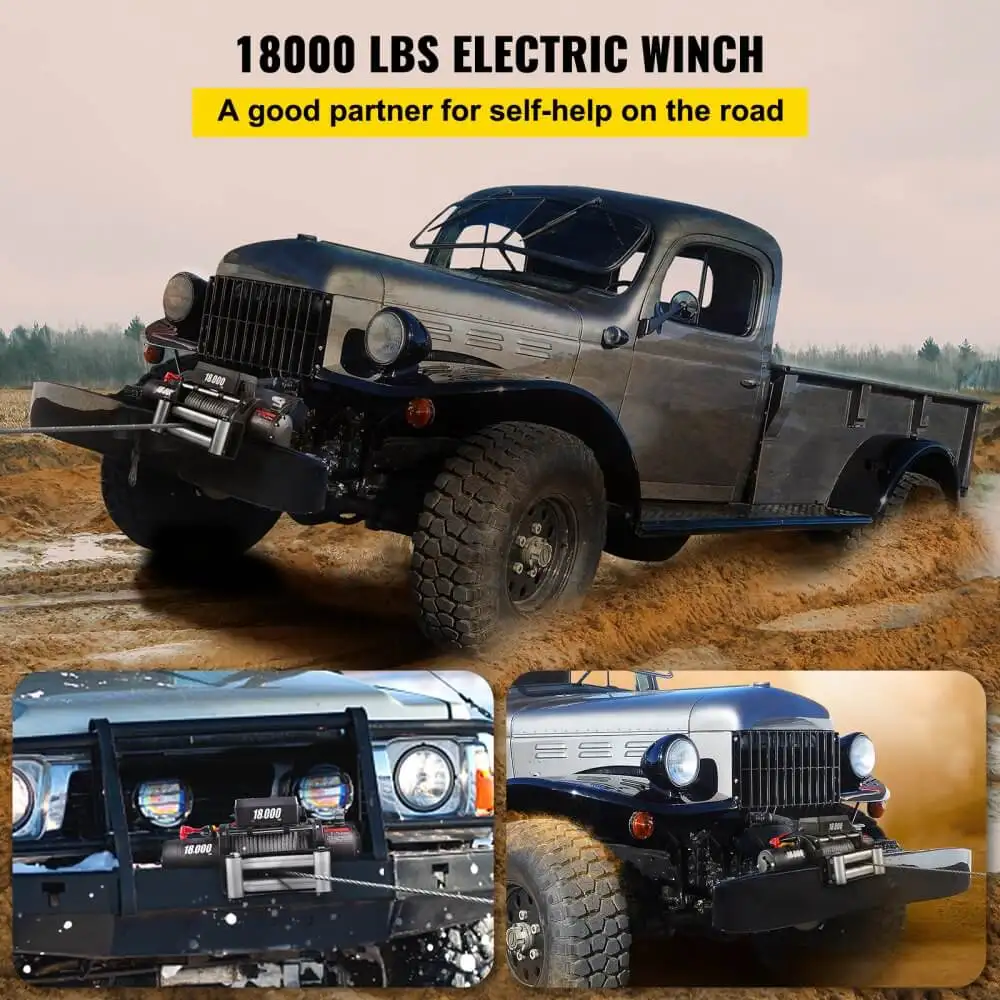
Winches are essential equipment for heavy lifting and play an important role in many different sectors of the economy. Electric winches are becoming more and more well-liked due to their many benefits for effectively handling heavy loads.
VEVOR electric winches provide the best possible power transmission for large lifting tasks. The capacity to precisely and energy-efficiently move large loads improves overall operational efficiency.
The 18,000 lbs VEVOR electric winch requires less maintenance than its hydraulic equivalents. Reduced maintenance duties lead to less downtime and lower maintenance costs because there are minimal moving parts and no hydraulic fluids to control. You can consider this option to precisely regulate the speed and direction of loads.
Winch Safety Tips
Winches rescue us from a variety of situations. You can always rely on your reliable winch to rescue you in an instant. It’s quite astounding to think that the small box at the front of your machine is strong enough to pull both you and your large machine through almost any challenge. It’s crucial to treat your winch with respect because it requires a lot of pulling force.
Proper Use and Handling
You should always have a tree saver or another strong winch strap with you to assist you in anchoring to trees. If you don’t have one, it could be tempting to just connect your winch line back onto the closest tree after wrapping it around it. This is not a smart idea.
Once everything is securely connected, you must add weight to your winch line. This is particularly valid for cable lines made of steel. All you have to do is lay a sack over the cable that is filled with tools or anything else equally weighed. Just make sure you follow the proper safety procedure.
Essential Gear
When evaluating winching equipment, there are numerous things to consider. There are many different sizes and forms of straps and shackles, as well as an extensive range of specialized accessories that all promise to be the one thing you’ll need in an emergency.
Let’s start with the bare minimum of gear you need to carry along with a winch in order to help sort out marketing gimmicks from the facts.
- Gloves: Gloves will protect your hands when handling bulky recovery tools and cables. They are especially important when using steel lines since a jagged bit of cable can cut your hand really quickly and cause severe harm.
- The grab strap: Have you ever wondered why there was a small strap dangling from your winch hook? It’s a grab grip for your winch hook. In particular, it allows you to wind in that final little bit of line—where a pinch is most likely to happen—while keeping your hands away from the hook and fairlead.
- Two shackles: In the rigging, the winch line is fastened to bumpers, straps, and extensions using bow and D shackles. It is not winching if you do not have a shackle of some kind. Although both can be used, we recommend bow shackles over D-shackles because of their greater capacity to support side weights and additional strap space.
Maintenance Matters
You must give your winch regular maintenance for optimal performance. The secret to getting the most out of your winch and avoiding the risks associated with using a winch is routine maintenance. With the right maintenance, you can extend the lifespan of your winch.
Make sure the winch is in good condition by inspecting it both before and after using it. Moreover, make sure there are no loose parts or fasteners by tightening the mounting bolts. To keep the winch clean, wipe any dirt off with a towel or rag.
Conclusion
Choosing the right winch size is crucial for safety, efficiency, and peace of mind during off-road adventures. For most SUVs, trucks, and Jeeps, a 9,000 to 12,000-pound winch is ideal. Larger trucks and heavily modified vehicles benefit from a 15,000 to 18,000-pound winch, while ATVs, UTVs, and small trailers are best served by a 4,500 to 5,000-pound winch.
Each winch size caters to specific needs, ensuring effective recovery and minimal risk in various scenarios. You can consider a VEVOR winch for your vehicle to ensure reliability and performance. Equip your vehicle with a VEVOR winch and enjoy your off-road adventures with confidence, knowing you’re prepared for any challenge.

